12.3 Prosocial Relations
Social psychologists focus not only on the dark side of social relationships, but also on the bright side, by studying prosocial behavior—
Attraction
Pause a moment and think about your relationships with two people—
The Psychology of Attraction
12-
We endlessly wonder how we can win others’ affection and what makes our own affections flourish or fade. Does familiarity breed contempt, or does it intensify affection? Do birds of a feather flock together, or do opposites attract? Is it what’s inside that counts, or does physical attractiveness matter greatly? To explore these questions, let’s consider three ingredients of our liking for one another: proximity, attractiveness, and similarity.
PROXIMITY Before friendships become close, they must begin. Proximity—
mere exposure effect the phenomenon that repeated exposure to novel stimuli increases liking of them.
Proximity breeds liking partly because of the mere exposure effect. Repeated exposure to novel stimuli increases our liking for them. By age three months, infants prefer photos of the race they most often see—

So, within certain limits, familiarity feeds fondness (Bornstein, 1989, 1999). Researchers demonstrated this by having four equally attractive women silently attend a 200-
No face is more familiar than your own. And that helps explain an interesting finding by Lisa DeBruine (2004): We like other people when their faces incorporate some morphed features of our own. When DeBruine (2002) had McMaster University students (both men and women) play a game with a supposed other player whose face they viewed on a monitor, they were more trusting and cooperative when the other person’s image had some of their own facial features morphed into it. In me I trust. (See also FIGURE 12.12.)
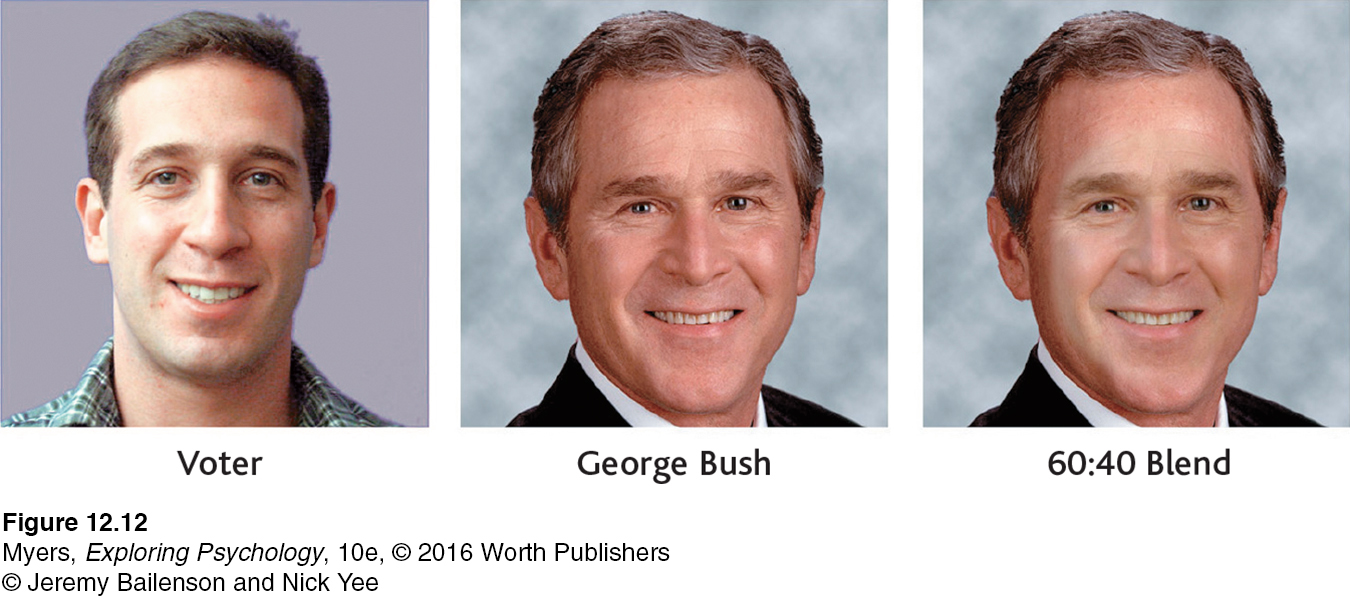
MODERN MATCHMAKING Those who have not found a romantic partner in their immediate proximity may cast a wider net by joining an online dating service. Some people, including occasional predators, dishonestly represent their age, attractiveness, occupation, or other details, and thus are not who they seem to be. Nevertheless, Katelyn McKenna and John Bargh and their colleagues have offered a reassuring finding: Compared with relationships formed in person, Internet-
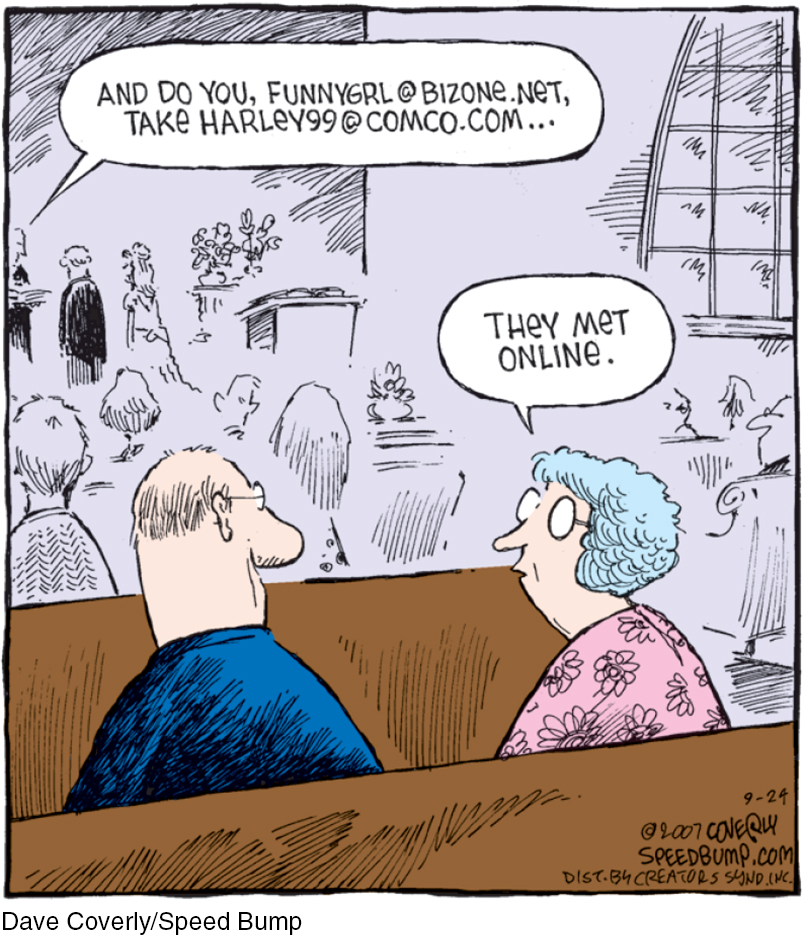
Internet friendships often feel as real and important as in-

Speed dating pushes the search for romance into high gear. In a process pioneered by a matchmaking Jewish rabbi, people meet a succession of prospective partners, either in person or via webcam (Bower, 2009). After a 3-
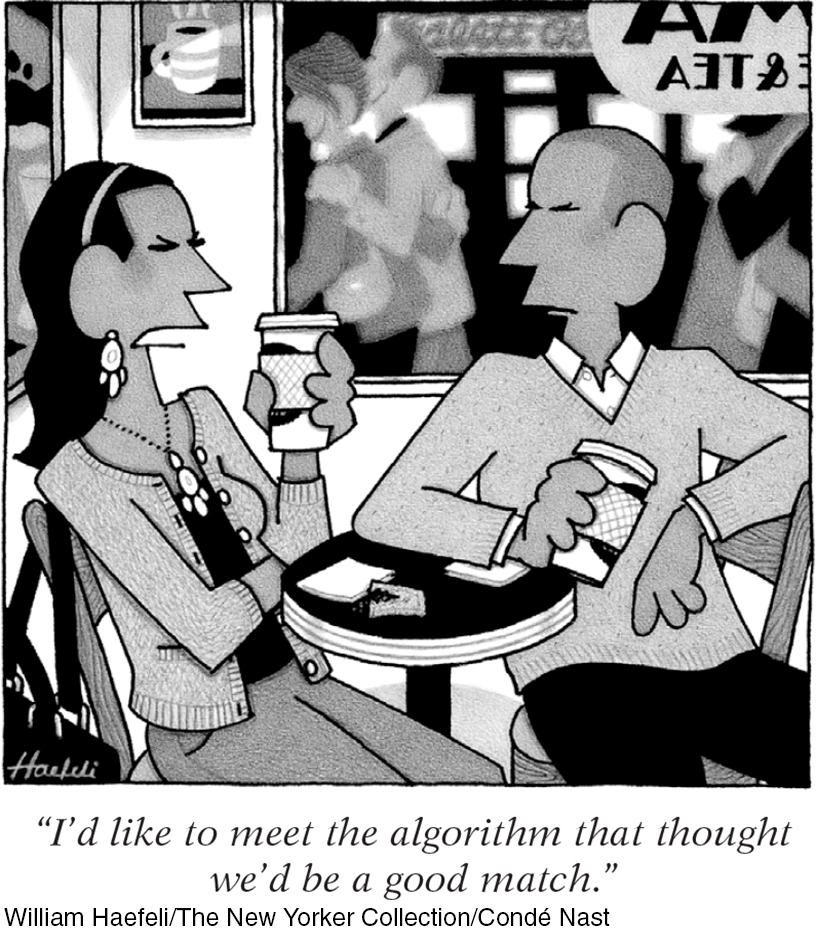
For researchers, speed dating offers a unique opportunity for studying influences on our first impressions of potential romantic partners. Among recent findings are these:
People who fear rejection often elicit it. After a 3-
minute speed date, those who most feared rejection were least often selected for a follow- up date (McClure & Lydon, 2014). Given more options, people’s choices become more superficial. Meeting lots of potential partners leads people to focus on more easily assessed characteristics, such as height and weight (Lenton & Francesconi, 2010). This was true even when researchers controlled for time spent with each partner.
Men wish for future contact with more of their speed dates; women tend to be choosier. But this difference disappears if the conventional roles are reversed, so that men stay seated while women circulate (Finkel & Eastwick, 2009).
PHYSICAL ATTRACTIVENESS Once proximity affords us contact, what most affects our first impressions? The person’s sincerity? Intelligence? Personality? Hundreds of experiments (all in a heterosexual context) reveal that it is something far more superficial: physical appearance. This finding is unnerving for those of us taught that “beauty is only skin deep” and “appearances can be deceiving.”
In one early study, researchers randomly matched new University of Minnesota students for a Welcome Week dance (Walster et al., 1966). Before the dance, the researchers gave each student a battery of personality and aptitude tests, and they rated each student’s physical attractiveness. During the blind date, the couples danced and talked for more than two hours and then took a brief intermission to rate their dates. What determined whether they liked each other? Only one thing seemed to matter: appearance. Both the men and the women liked good-

Physical attractiveness also predicts how often people date and how popular they feel. And it affects initial impressions of people’s personalities. We don’t assume that attractive people are more compassionate, but research participants perceive them as healthier, happier, more sensitive, more successful, and more socially skilled (Eagly et al., 1991; Feingold, 1992; Hatfield & Sprecher, 1986). Attractive, well-
“Personal beauty is a greater recommendation than any letter of introduction.”
Aristotle, Apothegms, 330 B.C.E.
For those who find the importance of looks unfair and unenlightened, two findings may be reassuring. First, people’s attractiveness is surprisingly unrelated to their self-
Beauty is also in the eye of the culture. Hoping to look attractive, people across the globe have pierced and tattooed their bodies, lengthened their necks, bound their feet, dyed their hair, and artificially lightened or darkened their skin. They have gorged themselves to achieve a full figure or liposuctioned fat to achieve a slim one, applied chemicals hoping to rid themselves of unwanted hair or to regrow wanted hair, strapped on leather garments to make their breasts seem smaller or surgically filled their breasts with silicone and worn push-

Some aspects of heterosexual attractiveness, however, do cross place and time (Cunningham et al., 2005; Langlois et al., 2000). By providing reproductive clues, bodies influence sexual attraction. As evolutionary psychologists explain (see Chapter 5), men in many cultures, from Australia to Zambia, judge women as more attractive if they have a youthful, fertile appearance, suggested by a low waist-
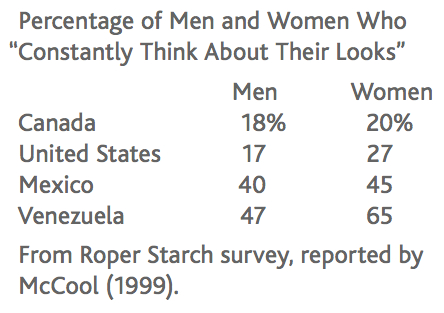
Our feelings also influence our attractiveness judgments. Imagine two people. The first is honest, humorous, and polite. The second is rude, unfair, and abusive. Which one is more attractive? Most people perceive the person with the appealing traits as more physically attractive (Lewandowski et al., 2007). Those we like we find attractive. In a Rodgers and Hammerstein musical, Prince Charming asks Cinderella, “Do I love you because you’re beautiful, or are you beautiful because I love you?” Chances are it’s both. As we see our loved ones again and again, their physical imperfections grow less noticeable and their attractiveness grows more apparent (Beaman & Klentz, 1983; Gross & Crofton, 1977). Shakespeare said it in A Midsummer Night’s Dream: “Love looks not with the eyes, but with the mind.” Come to love someone and watch beauty grow.
Women have 91 percent of cosmetic procedures (ASPS, 2010). Women also recall others’ appearances better than do men (Mast & Hall, 2006).
SIMILARITY So proximity has brought you into contact with someone, and your appearance has made an acceptable first impression. What influences whether you will become friends? As you get to know each other, will the chemistry be better if you are opposites or if you are alike?

It makes a good story—

Moreover, the more alike people are, the more their liking endures (Byrne, 1971). Journalist Walter Lippmann was right to suppose that love lasts “when the lovers love many things together, and not merely each other.” Similarity breeds content. One app therefore matches people with potential dates based on their proximity, and on the similarity of their Facebook profiles.
Proximity, attractiveness, and similarity are not the only determinants of attraction. We also like those who like us. This is especially true when our self-
Indeed, all the findings we have considered so far can be explained by a simple reward theory of attraction: We will like those whose behavior is rewarding to us, including those who are both able and willing to help us achieve our goals (Montoya & Horton, 2014). When people live or work in close proximity to us, it requires less time and effort to develop the friendship and enjoy its benefits. When people are attractive, they are aesthetically pleasing, and associating with them can be socially rewarding. When people share our views, they reward us by validating our beliefs.
RETRIEVE IT
Question
People tend to marry someone who lives or works nearby. This is an example of the in action.
Question
How does being physically attractive influence others' perceptions?
Romantic Love
12-13 How does romantic love typically change as time passes?
Sometimes people move quickly from initial impressions, to friendship, to the more intense, complex, and mysterious state of romantic love. If love endures, temporary passionate love will mellow into a lingering companionate love (Hatfield, 1988).

passionate love an aroused state of intense positive absorption in another, usually present at the beginning of a love relationship.
PASSIONATE LOVE A key ingredient of passionate love is arousal. The two-factor theory of emotion (Chapter 10) can help us understand this intense positive absorption in another (Hatfield, 1988). That theory assumes that:
emotions have two ingredients—
physical arousal plus cognitive appraisal. arousal from any source can enhance one emotion or another, depending on how we interpret and label the arousal.
In one famous experiment, researchers studied people crossing two bridges above British Columbia’s rocky Capilano River (Dutton & Aron, 1974, 1989). One, a swaying footbridge, was 230 feet above the rocks; the other was low and solid. The researchers had an attractive young woman intercept men coming off each bridge, and ask their help in filling out a short questionnaire. She then offered her phone number in case they wanted to hear more about her project. Far more of those who had just crossed the high bridge—
COMPANIONATE LOVE Although the desire and attachment of romantic love often endure, the intense absorption in the other, the thrill of the romance, the giddy “floating on a cloud” feelings typically fade. Does this mean the French are correct in saying that “love makes the time pass and time makes love pass”? Or can friendship and commitment keep a relationship going after the passion cools?
companionate love the deep affectionate attachment we feel for those with whom our lives are intertwined.
As love matures, it typically becomes a steadier companionate love—a deep, affectionate attachment (Hatfield, 1988). The flood of passion-facilitating hormones (testosterone, dopamine, adrenaline) subsides and another hormone, oxytocin, supports feelings of trust, calmness, and bonding with the mate. In the most satisfying of marriages, attraction and sexual desire endure, minus the obsession of early stage romance (Acevedo & Aron, 2009).
“When two people are under the influence of the most violent, most insane, most delusive, and most transient of passions, they are required to swear that they will remain in that excited, abnormal, and exhausting condition continuously until death do them part.”
George Bernard Shaw, “Getting Married,” 1908
There may be adaptive wisdom in the shift from passion to attachment (Reis & Aron, 2008). Passionate love often produces children, whose survival is aided by the parents’ waning obsession with each another. Failure to appreciate passionate love’s limited half-
equity a condition in which people receive from a relationship in proportion to what they give to it.
One key to a gratifying and enduring relationship is equity. When equity exists—
Equity’s importance extends beyond marriage. Mutually sharing one’s self and possessions, making decisions together, giving and getting emotional support, promoting and caring about each other’s welfare—
self-disclosure the act of revealing intimate aspects of oneself to others.
Another vital ingredient of loving relationships is self-disclosure, the revealing of intimate details about ourselves—
One experiment marched student pairs through 45 minutes of increasingly self-
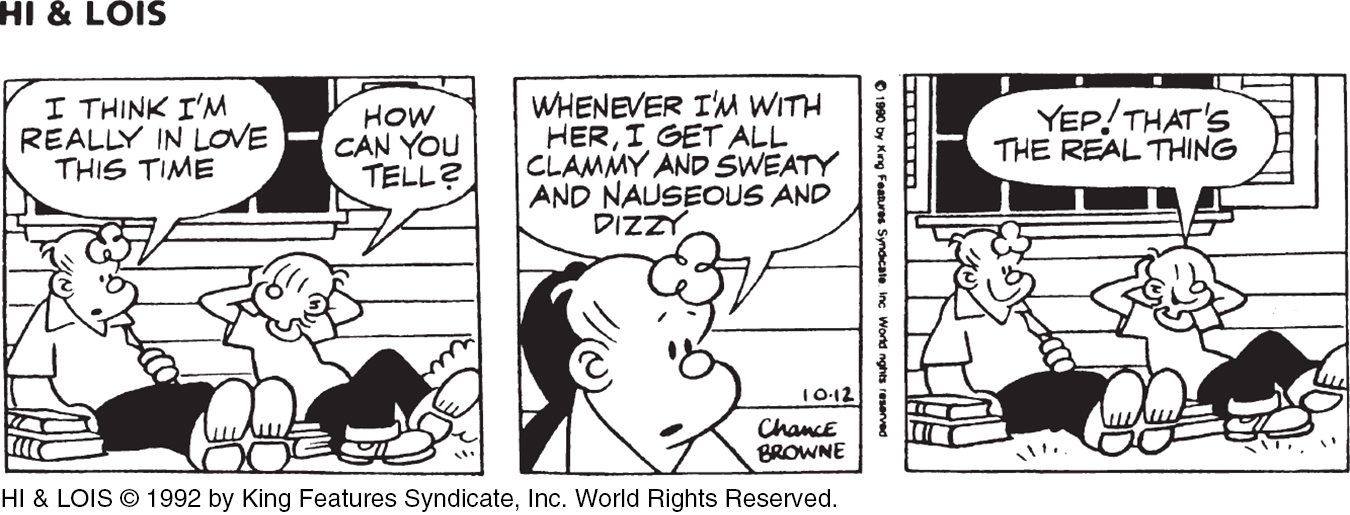
In addition to equity and self-
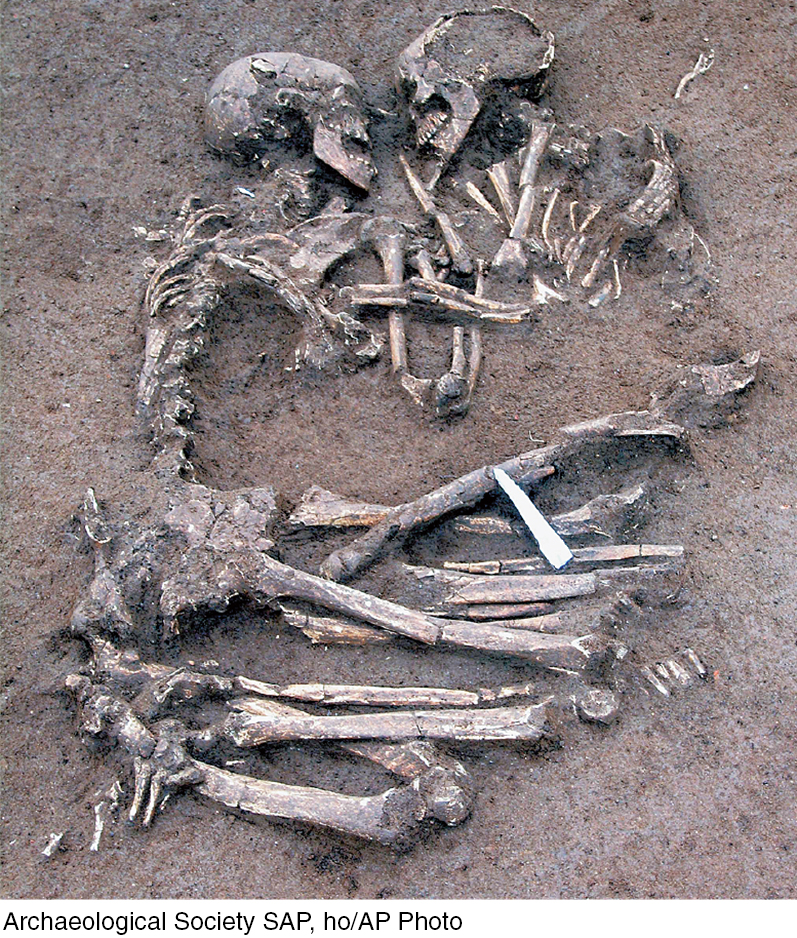
In the mathematics of love, self-
RETRIEVE IT
Question
How does the two-
Question
Two vital components for maintaining companionate love are and - .
Altruism
12-
altruism unselfish regard for the welfare of others.
Altruism is an unselfish concern for the welfare of others. In rescuing his jailer, Dirk Willems exemplified altruism. So also did Carl Wilkens and Paul Rusesabagina in Kigali, Rwanda. Wilkens, a Seventh-
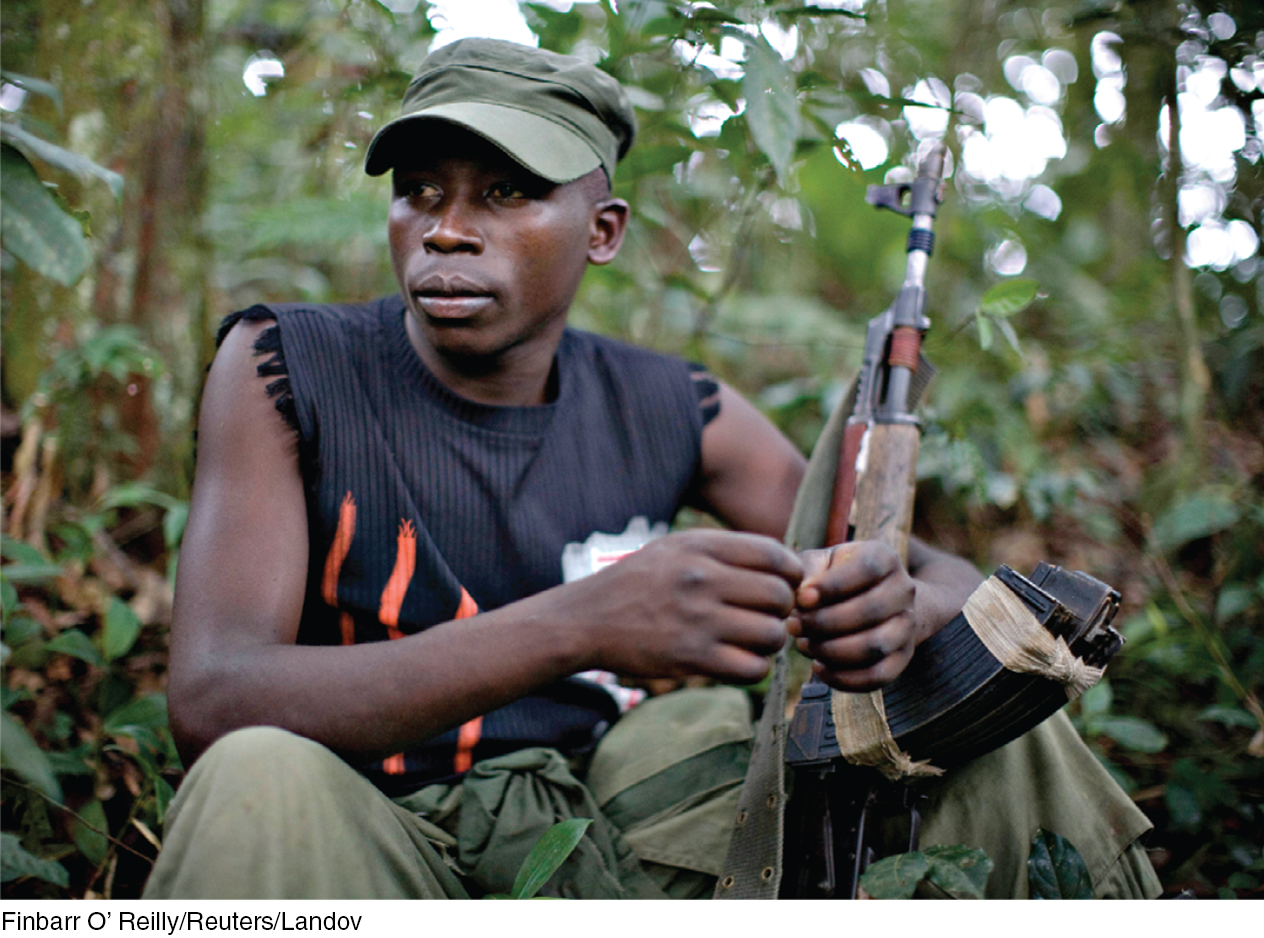
Elsewhere in Kigali, Rusesabagina, a Hutu married to a Tutsi and the acting manager of a luxury hotel, was sheltering more than 1200 terrified Tutsis and moderate Hutus. When international peacekeepers abandoned the city and hostile militia threatened his guests in the “Hotel Rwanda” (as it came to be called in a 2004 movie), the courageous Rusesabagina began cashing in past favors. He bribed the militia and telephoned influential people abroad to exert pressure on local authorities, thereby sparing the lives of the hotel’s occupants despite the surrounding chaos. Both Wilkens and Rusesabagina were displaying altruism, an unselfish regard for the welfare of others.
Altruism became a major concern of social psychologists after an especially vile act. On March 13, 1964, a stalker repeatedly stabbed Kitty Genovese, then raped her as she lay dying outside her Queens, New York, apartment at 3:30 A.M. “Oh, my God, he stabbed me!” Genovese screamed into the early morning stillness. “Please help me!” Windows opened and lights went on as some neighbors heard her screams. Her attacker fled and then returned to stab and rape her again. Not until he had fled for good did anyone so much as call the police, at 3:50 A.M.
Bystander Intervention
Reflecting on initial reports of the Genovese murder and other such tragedies, most commentators were outraged by the bystanders’ apparent “apathy” and “indifference.” Rather than blaming the onlookers, social psychologists John Darley and Bibb Latané (1968b) attributed their inaction to an important situational factor—
After staging emergencies under various conditions, Darley and Latané assembled their findings into a decision scheme: We will help only if the situation enables us first to notice the incident, then to interpret it as an emergency, and finally to assume responsibility for helping (FIGURE 12.14). At each step, the presence of others can turn us away from the path that leads to helping.
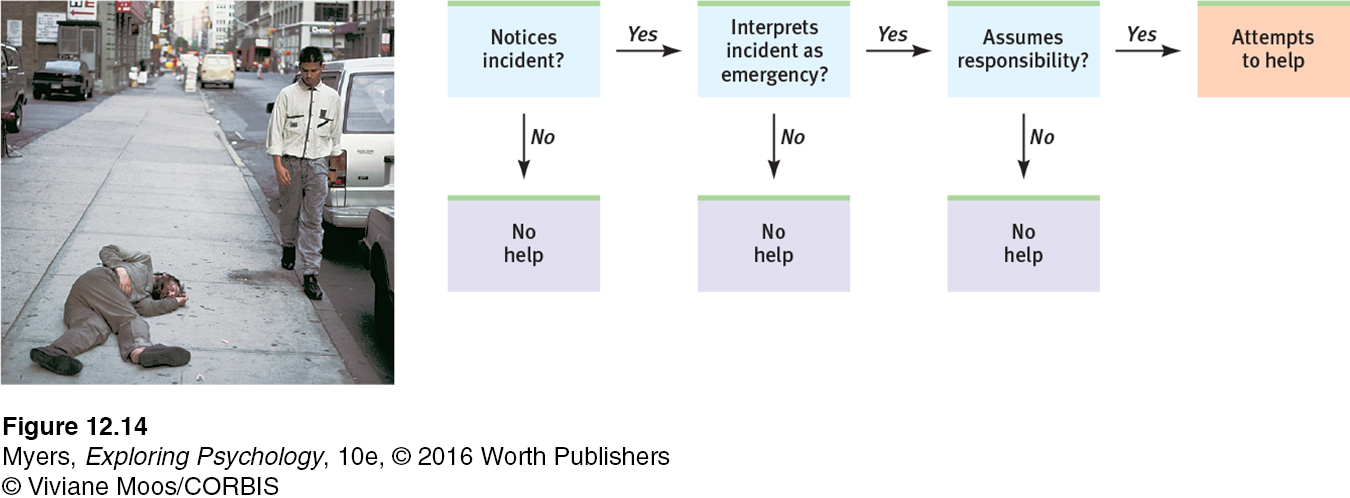
Darley and Latané reached their conclusions after interpreting the results of a series of experiments. For example, as students in different laboratory rooms talked over an intercom, the experimenters simulated an emergency. Each student was in a separate cubicle, and only the person whose microphone was switched on could be heard. When his turn came, one student (an accomplice of the experimenters) made sounds as though he were having an epileptic seizure, and he called for help (Darley & Latané, 1968a).
How did the others react? As FIGURE 12.15 shows, those who believed only they could hear the victim—

 For a review of research on emergency helping, visit LaunchPad’s Concept Practice: When Will People Help Others?
For a review of research on emergency helping, visit LaunchPad’s Concept Practice: When Will People Help Others?
bystander effect the tendency for any given bystander to be less likely to give aid if other bystanders are present.
Hundreds of additional experiments have confirmed this bystander effect. For example, researchers and their assistants took 1497 elevator rides in three cities and “accidentally” dropped coins or pencils in front of 4813 fellow passengers (Latané & Dabbs, 1975). When alone with the person in need, 40 percent helped; in the presence of 5 other bystanders, only 20 percent helped.
Observations of behavior in thousands of these situations—
the person appears to need and deserve help.
the person is in some way similar to us.
the person is a woman.
we have just observed someone else being helpful.
we are not in a hurry.
we are in a small town or rural area.
we are feeling guilty.
we are focused on others and not preoccupied.
we are in a good mood.
This last result, that happy people are helpful people, is one of the most consistent findings in all of psychology. As poet Robert Browning (1868) observed, “Oh, make us happy and you make us good!” It doesn’t matter how we are cheered. Whether by being made to feel successful and intelligent, by thinking happy thoughts, by finding money, or even by receiving a posthypnotic suggestion, we become more generous and more eager to help (Carlson et al., 1988).
So happiness breeds helpfulness. But it’s also true that helpfulness breeds happiness. Making charitable donations activates brain areas associated with reward (Harbaugh et al., 2007). That helps explain a curious finding: People who give money away are happier than those who spend it almost entirely on themselves. In a survey of more than 200,000 people worldwide, people in both rich and poor countries were happier with their lives if they had donated to a charity in the last month (Aknin et al., 2013). Just reflecting on a time when one spent money on others provides most people with a mood boost. And in one experiment, researchers gave people an envelope with cash and instructions: Some were to spend the money on themselves, while others were told to spend it on others (Dunn et al., 2008, 2013). Which group was happiest at the day’s end? It was, indeed, those assigned to the spend-
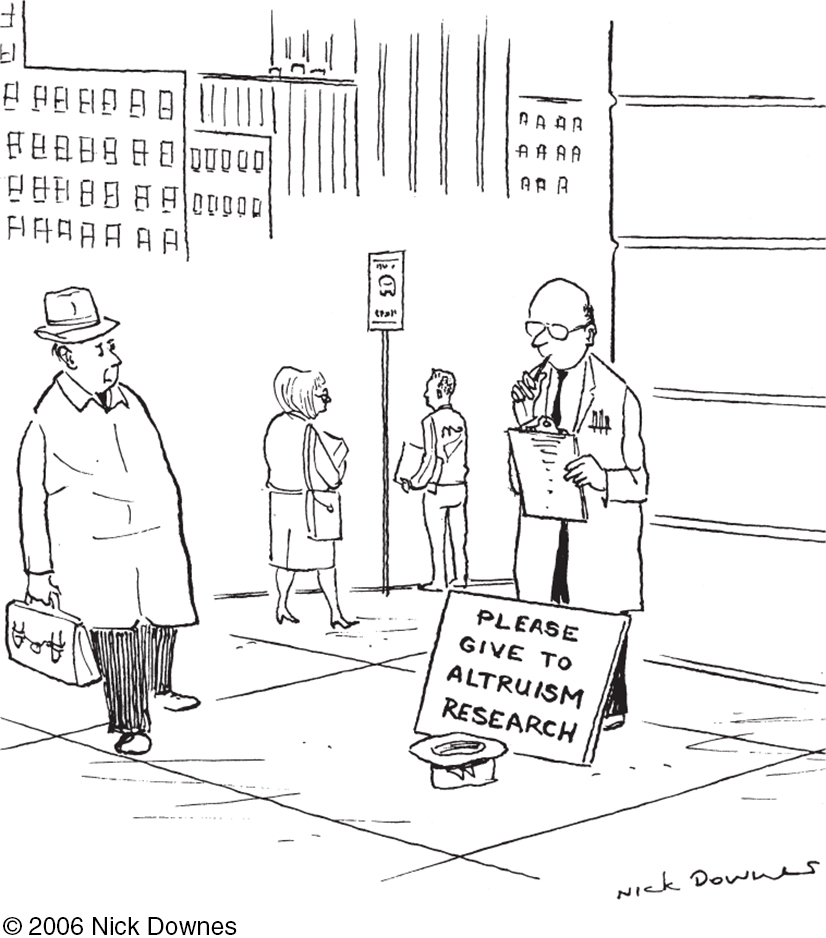
RETRIEVE IT
Question
Why didn't anybody help Kitty Genovese? What social psychology principle did this incident illustrate?
The Norms for Helping
12-
social exchange theory the theory that our social behavior is an exchange process, the aim of which is to maximize benefits and minimize costs.
Why do we help? One widely held view is that self-
reciprocity norm an expectation that people will help, not hurt, those who have helped them.
Others believe that we help because we have been socialized to do so, through norms that prescribe how we ought to behave. Through socialization, we learn the reciprocity norm: the expectation that we should return help, not harm, to those who have helped us. In our relations with others of similar status, the reciprocity norm compels us to give (in favors, gifts, or social invitations) about as much as we receive. In one experiment, people who were generously treated also became more likely to be generous to a stranger—
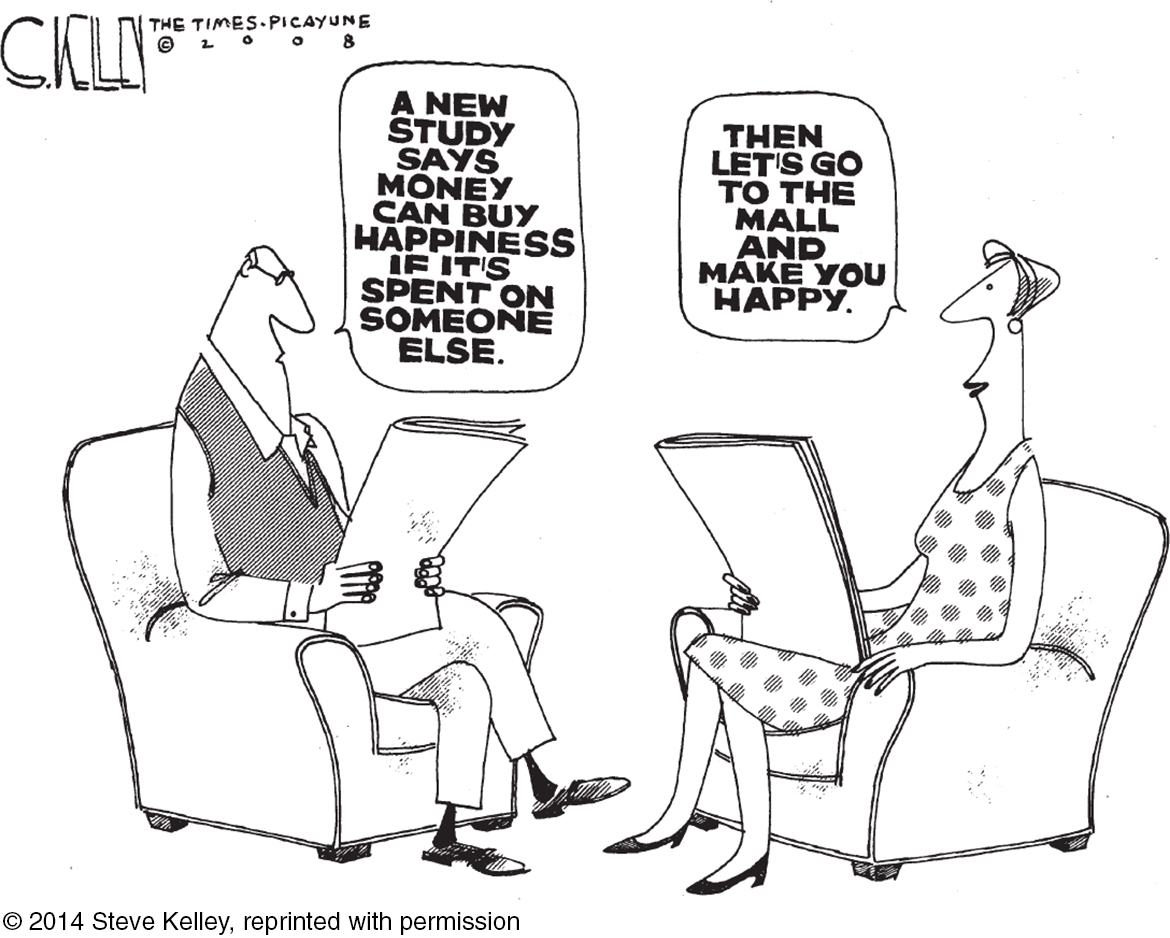
The reciprocity norm kicked in after Dave Tally, a Tempe, Arizona, homeless man, found $3300 in a backpack that an Arizona State University student had misplaced on his way to buy a used car (Lacey, 2010). Instead of using the cash for much-
social-responsibility norm an expectation that people will help those needing their help.
We also learn a social-responsibility norm: that we should help those who need our help, such as young children and others who cannot give as much as they receive, even if the costs outweigh the benefits. People who attend weekly religious services often are admonished to practice the social-
Peacemaking
With astonishing speed, recent democratic movements have swept away totalitarian rule in Eastern European and Arab countries. Yet every day, the world continues to spend almost $5 billion for arms and armies—
Elements of Conflict
12-
conflict a perceived incompatibility of actions, goals, or ideas.
To a social psychologist, a conflict is a perceived incompatibility of actions, goals, or ideas. The elements of conflict are much the same, whether we are speaking of nations at war, cultural groups feuding within a society, or partners sparring in a relationship. In each situation, people become enmeshed in potentially destructive processes that can produce unwanted results. Among these processes are social traps and distorted perceptions.

social trap a situation in which the conflicting parties, by each pursuing their self-
SOCIAL TRAPS In some situations, we support our collective well-
Researchers have created mini social traps in laboratory games that require two participants to choose between pursuing their immediate self-
Social traps challenge us to reconcile our right to pursue our personal well-
mirror-image perceptions mutual views often held by conflicting people, as when each side sees itself as ethical and peaceful and views the other side as evil and aggressive.
ENEMY PERCEPTIONS Psychologists have noted that those in conflict have a curious tendency to form diabolical images of one another. These distorted images are, ironically, so similar that we call them mirror-image perceptions: As we see “them”—as untrustworthy, with evil intentions—
self-fulfilling prophecy a belief that leads to its own fulfillment.
Mirror-
Individuals and nations alike tend to see their own actions as responses to provocation, not as the causes of what happens next. Perceiving themselves as returning tit for tat, they often hit back harder, as University College London volunteers did in one experiment (Shergill et al., 2003). After feeling pressure on their own finger, they were to use a mechanical device to press on another volunteer’s finger. Although told to reciprocate with the same amount of pressure, they typically responded with about 40 percent more force than they had just experienced. Despite seeking only to respond in kind, their touches soon escalated to hard presses, much as when each child after a fight claims that “I just poked him, but he hit me harder.”
Mirror-
The point is not that truth must lie midway between two such views; one may be more accurate. The point is that enemy perceptions often form mirror images. Moreover, as enemies change, so do perceptions. In American minds and media, the “bloodthirsty, cruel, treacherous” Japanese of World War II later became our “intelligent, hardworking, self-
Promoting Peace
12-
How can we make peace? Can contact, cooperation, communication, and conciliation transform the antagonisms fed by prejudice and conflict into attitudes that promote peace? Research indicates that, in some cases, they can.
CONTACT Does it help to put two conflicting parties into close contact? It depends. Negative contact increases disliking (Barlow et al., 2012). But positive contact—
With cross-
racial contact, South Africans’ interracial attitudes have moved “into closer alignment” (Dixon et al., 2007; Finchilescu & Tredoux, 2010). Heterosexuals’ attitudes toward gay people are influenced not only by what they know but also by whom they know (Collier et al., 2012; Smith et al., 2009). In surveys, the reason people most often give for becoming more supportive of same-
sex marriage is “having friends, family, or acquaintances who are gay or lesbian” (Pew, 2013). Even indirect contact with an outgroup member (via reading a story or through a friend who has an outgroup friend) has reduced prejudice (Cameron & Rutland, 2006; Pettigrew et al., 2007).
However, contact is not always enough. In many schools, ethnic groups segregate themselves in lunchrooms, in classrooms, and elsewhere on school grounds (Alexander & Tredoux, 2010; Clack et al., 2005; Schofield, 1986). People in each group often think that they would welcome more contact with the other group, but they assume the other group does not reciprocate the wish (Richeson & Shelton, 2007). “I don’t reach out to them, because I don’t want to be rebuffed; they don’t reach out to me, because they’re just not interested.” When such mirror-
COOPERATION To see if enemies could overcome their differences, researcher Muzafer Sherif (1966) set a conflict in motion at a boys’ summer camp. He separated 22 Oklahoma City boys into two separate camp areas. Then he had the two groups compete for prizes in a series of activities. Before long, each group became intensely proud of itself and hostile to the other group’s “sneaky,” “smart-
“You cannot shake hands with a clenched fist.”
Indira Gandhi, 1971
superordinate goals shared goals that override differences among people and require their cooperation.
Sherif accomplished this by giving them superordinate goals—shared goals that could be achieved only through cooperation. When he arranged for the camp water supply to “fail,” all 22 boys had to work together to restore the water. To rent a movie in those pre-
A shared predicament likewise had a powerfully unifying effect in the weeks after the 9/11 attacks. Patriotism soared as Americans felt “we” were under attack. Gallup-
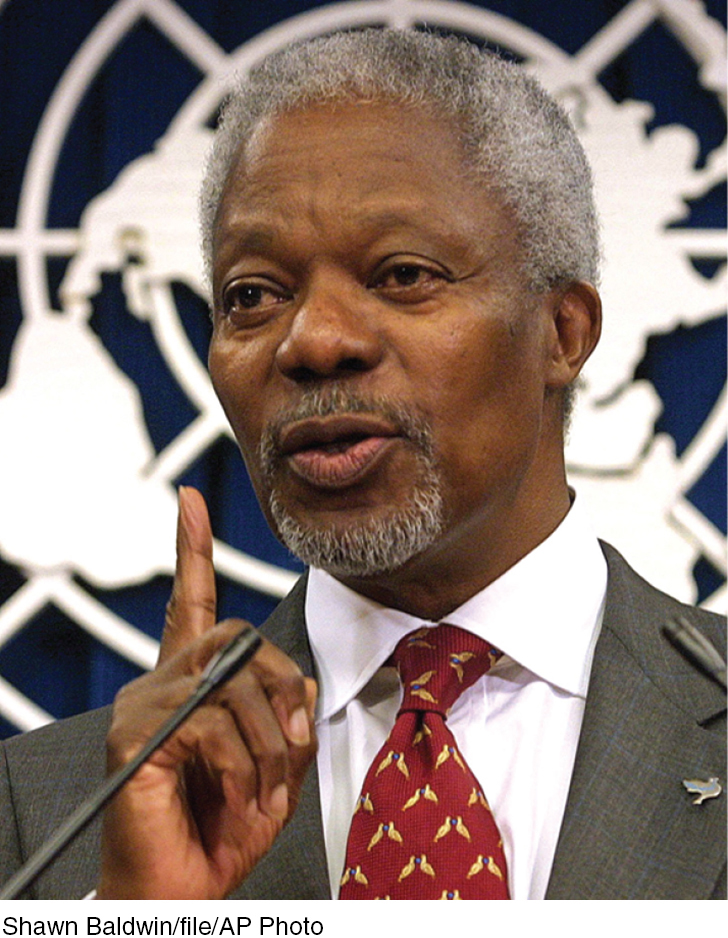
At such times, cooperation can lead people to define a new, inclusive group that dissolves their former subgroups (Dovidio & Gaertner, 1999). To accomplish this, you might seat members of two groups not on opposite sides, but alternately around a table. Give them a new, shared name. Have them work together. Then watch “us” and “them” become “we.” After 9/11, one 18-
If cooperative contact between rival group members encourages positive attitudes, might this principle bring people together in multicultural schools? Could interracial friendships replace competitive classroom situations with cooperative ones? Could cooperative learning maintain or even enhance student achievement? Experiments with adolescents from 11 countries confirm that, in each case, the answer is Yes (Roseth et al., 2008). In the classroom as in the sports arena, members of interracial groups who work together on projects typically come to feel friendly toward one another. Knowing this, thousands of teachers have made interracial cooperative learning part of their classroom experience.
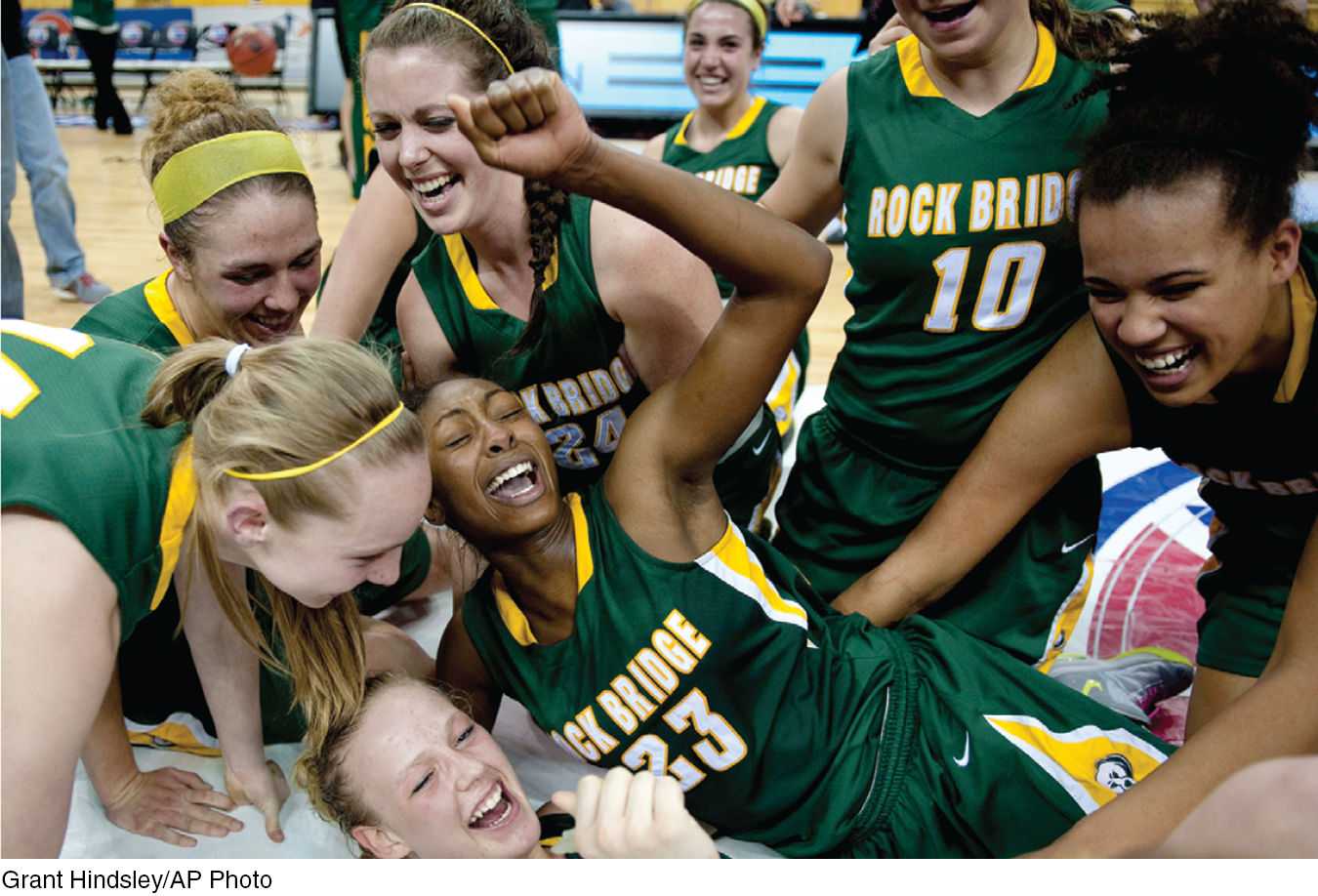
The power of cooperative activity to make friends of former enemies has led psychologists to urge increased international exchange and cooperation. Some experiments have found that just imagining the shared threat of global climate change reduces international hostilities (Pyszczynski et al., 2012). From adjacent Brazilian tribes to European countries, formerly conflicting groups have managed to build interconnections, interdependence, and a shared social identity as they seek common goals (Fry, 2012). As we engage in mutually beneficial trade, as we work to protect our common destiny on this fragile planet, and as we become more aware that our hopes and fears are shared, we can transform misperceptions that feed conflict into feelings of solidarity based on common interests.
COMMUNICATION When real-
CONCILIATION Understanding and cooperative resolution are most needed, yet least likely, in times of anger or crisis (Bodenhausen et al., 1994; Tetlock, 1988). When conflicts intensify, images become more stereotyped, judgments more rigid, and communication more difficult, or even impossible. Each party is likely to threaten, coerce, or retaliate. In the weeks before the 1990 Gulf War, the first President George Bush threatened, in the full glare of publicity, to “kick Saddam’s ass.” Saddam Hussein communicated in kind, threatening to make Americans “swim in their own blood.”
GRIT Graduated and Reciprocated Initiatives in Tension-
Under such conditions, is there an alternative to war or surrender? Social psychologist Charles Osgood (1962, 1980) advocated a strategy of Graduated and Reciprocated Initiatives in Tension-Reduction, nicknamed GRIT. In applying GRIT, one side first announces its recognition of mutual interests and its intent to reduce tensions. It then initiates one or more small, conciliatory acts. Without weakening one’s retaliatory capability, this modest beginning opens the door for reciprocity by the other party. Should the enemy respond with hostility, one reciprocates in kind. But so, too, with any conciliatory response.
In laboratory experiments, small conciliatory gestures—
As working toward shared goals reminds us, we are more alike than different. Civilization advances not by conflict and cultural isolation, but by tapping the knowledge, the skills, and the arts that are each culture’s legacy to the whole human race. Thanks to cultural sharing, every modern society is enriched by a cultural mix (Sowell, 1991). We have China to thank for paper and printing and for the magnetic compass that enabled the great explorations. We have Egypt to thank for trigonometry. We have the Islamic world and India’s Hindus to thank for our Arabic numerals. While celebrating and claiming these diverse cultural legacies, we can also welcome the enrichment of today’s social diversity. We can view ourselves as instruments in a human orchestra. And we—
RETRIEVE IT
Question
What are some ways to reconcile conflicts and promote peace?
REVIEW Prosocial Relations
Learning Objectives
Test Yourself by taking a moment to answer each of these Learning Objective Questions (repeated here from within the chapter). Research suggests that trying to answer these questions on your own will improve your long-
Question
12-
Question
12-
Question
12-
Question
12-
Question
12-
Question
12-
Terms and Concepts to Remember
Test yourself on these terms.
Question
mere exposure effect (p. 475) passionate love (p. 479) companionate love (p. 480) equity (p. 480) self- altruism (p. 481) bystander effect (p. 482) social exchange theory (p. 483) reciprocity norm (p. 483) social- conflict (p. 484) social trap (p. 484) mirror- self- superordinate goals (p. 486) GRIT (p. 488) | the theory that our social behavior is an exchange process, the aim of which is to maximize benefits and minimize costs. the tendency for any given bystander to be less likely to give aid if other bystanders are present. the deep affectionate attachment we feel for those with whom our lives are intertwined. a condition in which people receive from a relationship in proportion to what they give to it. a belief that leads to its own fulfillment. unselfish regard for the welfare of others. the phenomenon that repeated exposure to novel stimuli increases liking of them. an aroused state of intense positive absorption in another, usually present at the beginning of a love relationship. shared goals that override differences among people and require their cooperation. mutual views often held by conflicting people, as when each side sees itself as ethical and peaceful and views the other side as evil and aggressive. an expectation that people will help, not hurt, those who have helped them. Graduated and Reciprocated Initiatives in Tension- a situation in which the conflicting parties, by each pursuing their self- a perceived incompatibility of actions, goals, or ideas. the act of revealing intimate aspects of oneself to others. an expectation that people will help those needing their help. |
Experience the Testing Effect
Test yourself repeatedly throughout your studies. This will not only help you figure out what you know and don’t know; the testing itself will help you learn and remember the information more effectively thanks to the testing effect.
Question 12.17
1. The more familiar a stimulus becomes, the more we tend to like it. This exemplifies the effect.
Question 12.18
2. A happy couple celebrating their 50th wedding anniversary is likely to experience deep love, even though their love has probably decreased over the years.
Question 12.19
3. After vigorous exercise, you meet an attractive person, and you are suddenly seized by romantic feelings for that person. This response supports the two-factor theory of emotion, which assumes that emotions, such as passionate love, consist of physical arousal plus
| A. |
| B. |
| C. |
| D. |
Question 12.20
4. The bystander effect states that a particular bystander is less likely to give aid if
| A. |
| B. |
| C. |
| D. |
Question 12.21
5. Our enemies often have many of the same negative impressions of us as we have of them. This exemplifies the concept of perceptions.
Question 12.22
6. One way of resolving conflicts and fostering cooperation is by giving rival groups shared goals that help them override their differences. These are called goals.
Use  to create your personalized study plan, which will direct you to the resources that will help you most in
to create your personalized study plan, which will direct you to the resources that will help you most in  .
.